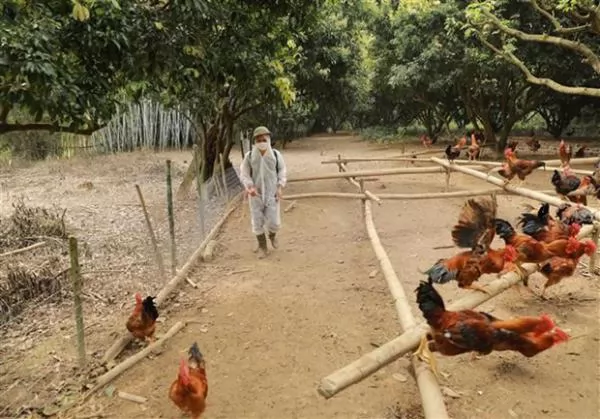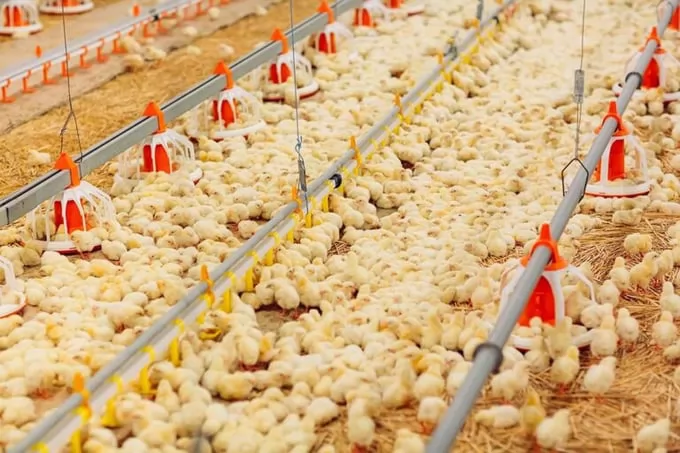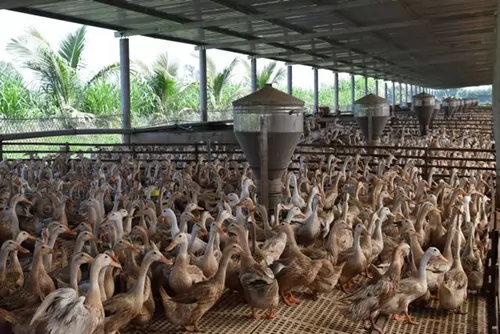Trà Vinh farmers harvest mud crab for Tết, earn high profit

Harvested mud crabs. — VNA/VNS Photo Duy Ba
TRÀ VINH — Farmers in Trà Vinh Province are entering the mud crab harvest for Tết (Lunar New Year) and earning a high profit of VNĐ30 - 35 million (US$1,300 - 1,500) per hectare as demand is high for the coming holiday, which falls on January 25.
In the Cửu Long (Mekong) Delta province, farmers harvest three mud crab crops a year, including one for Tết, as it takes about four months from breeding until harvest.
Farmers in the province, which is one of the delta’s largest mud crab producers, breed mud crabs mostly in the coastal areas of Cầu Ngang, Duyên Hải and Châu Thành districts and Duyên Hải Town.
Nguyễn Văn Huệ, who breeds mud crabs in Châu Thành’s Long Hòa Commune, said most mud crab farmers earned high profits last year because of high prices.
Mud crabs are purchased by traders at prices between VNĐ150,000-320,000 (US$6.5-14) a kilo depending on their gender and size.
The province’s mud crabs are sold locally and other localities, including HCM City, and are exported.
With stable selling prices, breeding mud crabs provides farmers sustainable incomes compared to black tiger shrimp and white-legged shrimp under semi-intensive farming models, according to authorities.
Huỳnh Quốc Vũ, chairman of Long Hòa Commune's People’s Committee, said many farmers in the commune had switched from breeding three shrimp crops a year to one shrimp crop and two mud crabs a year, or switched completely to breeding two to three mud crab crops a year.
The switch had offered high and sustainable incomes for farmers, he said.
Many farmers also stagger the breeding of mud crabs so they can have harvest year round to avoid an over-supply during the main harvest seasons.
Each year farmers in the province also calculate the time when they begin a new mud crab crop for Tết so they can harvest before the holiday to fetch high prices.
The province’s Department of Agriculture and Rural Development has encouraged farmers in coastal areas to breed mud crabs, including rotation of mud crab and shrimp in the same ponds, to reduce the risk of losses.
Farmers have also been encouraged to breed mud crabs under advanced extensive farming models in mangrove forests, a method that adapts to climate change and is sustainable.
The province has more than 9,000ha of mangrove forests in coastal areas. Of the figure, the province has allocated 5,460ha for individual households and organisations to protect and exploit, including breeding aquatic species in mangrove forests.
Mud crabs are easy to breed, are resistant to disease, and do not require high breeding costs as they eat mostly trash fish.
With a coastline of 65 kilometres, the province has potential to develop aquaculture, including mud crab cultivation.
The province has 13,000ha of mud crab with an annual output of more than 1,400 tonnes. Of the 13,000ha, 35 per cent are intensive farming with a yield of 0.8 – 1.2 tonnes per hectare a year. — VNS
Maybe you are interested

HCM City activates H5N1 bird flu response system
The Ho Chi Minh City Department of Health has activated its surveillance system for early detection of all potentially suspected infections of Influenza A virus subtype H5N1 (A/H5N1)...

Active walking in broiler chickens - a flagship for good welfare
Automated assessment of broiler chicken welfare poses particular problems due to the huge number of birds involved and the range of different welfare measures currently being proposed.

Duck farmers urged to meet biosafety standards
HCM CITY — Authorities in the Cửu Long (Mekong) Delta have encouraged farmers to breed ducks under biosafety standards and develop guaranteed outlets to ensure stable incomes.





